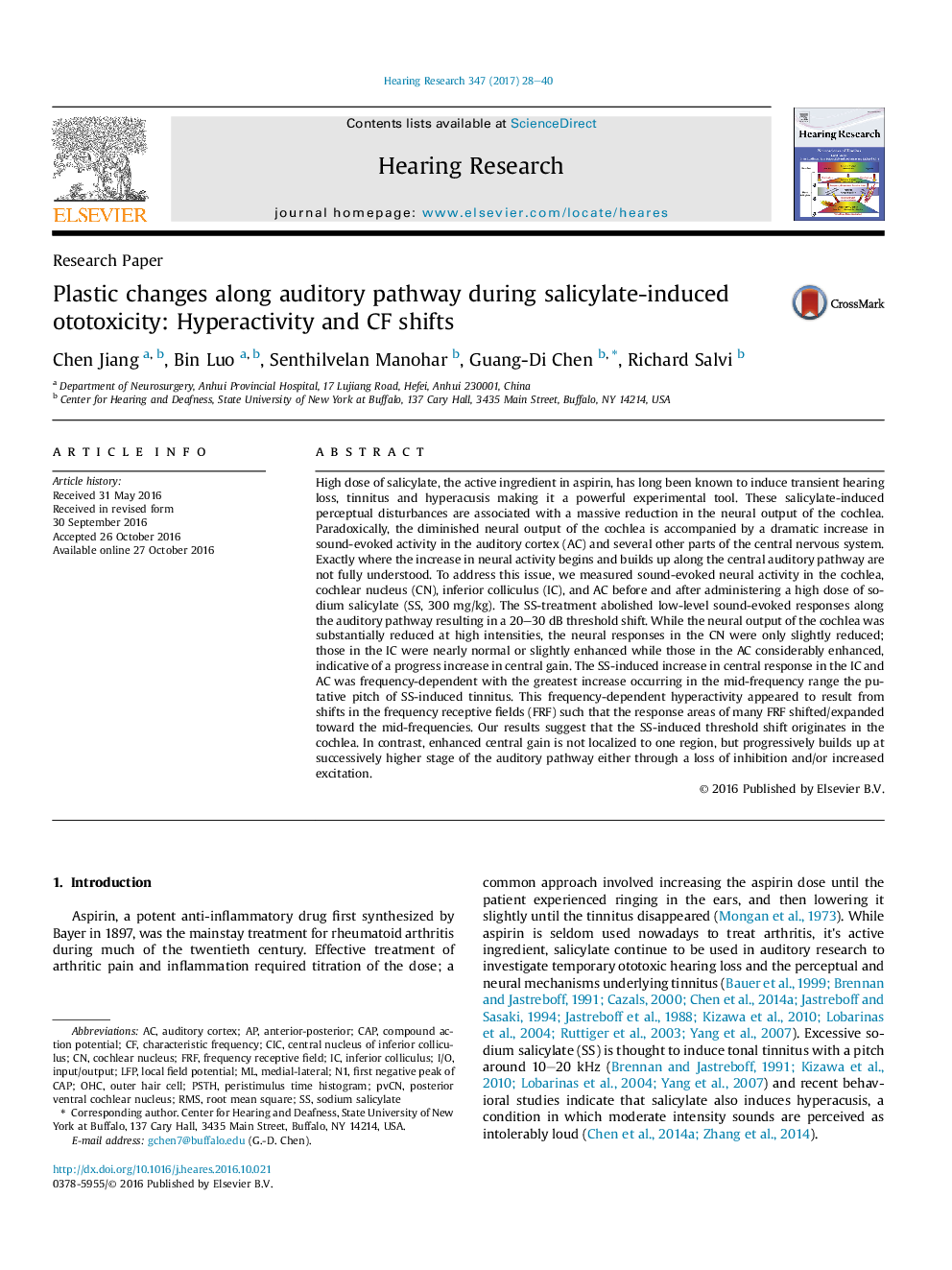| کد مقاله | کد نشریه | سال انتشار | مقاله انگلیسی | نسخه تمام متن |
|---|---|---|---|---|
| 5739411 | 1615553 | 2017 | 13 صفحه PDF | دانلود رایگان |

- Salicylate decreased the neural output of the cochlea by >50%
- Cochlear nucleus responses reduced only 20% indicative of increased gain
- Response from inferior colliculus and auditory cortex significantly enhanced
- Salicylate induced CF upshifts and downshifts in inferior colliculus and cortex
- Auditory cortex responses enhanced nearly 100% in the mid-frequencies
High dose of salicylate, the active ingredient in aspirin, has long been known to induce transient hearing loss, tinnitus and hyperacusis making it a powerful experimental tool. These salicylate-induced perceptual disturbances are associated with a massive reduction in the neural output of the cochlea. Paradoxically, the diminished neural output of the cochlea is accompanied by a dramatic increase in sound-evoked activity in the auditory cortex (AC) and several other parts of the central nervous system. Exactly where the increase in neural activity begins and builds up along the central auditory pathway are not fully understood. To address this issue, we measured sound-evoked neural activity in the cochlea, cochlear nucleus (CN), inferior colliculus (IC), and AC before and after administering a high dose of sodium salicylate (SS, 300Â mg/kg). The SS-treatment abolished low-level sound-evoked responses along the auditory pathway resulting in a 20-30Â dB threshold shift. While the neural output of the cochlea was substantially reduced at high intensities, the neural responses in the CN were only slightly reduced; those in the IC were nearly normal or slightly enhanced while those in the AC considerably enhanced, indicative of a progress increase in central gain. The SS-induced increase in central response in the IC and AC was frequency-dependent with the greatest increase occurring in the mid-frequency range the putative pitch of SS-induced tinnitus. This frequency-dependent hyperactivity appeared to result from shifts in the frequency receptive fields (FRF) such that the response areas of many FRF shifted/expanded toward the mid-frequencies. Our results suggest that the SS-induced threshold shift originates in the cochlea. In contrast, enhanced central gain is not localized to one region, but progressively builds up at successively higher stage of the auditory pathway either through a loss of inhibition and/or increased excitation.
198
Journal: Hearing Research - Volume 347, April 2017, Pages 28-40